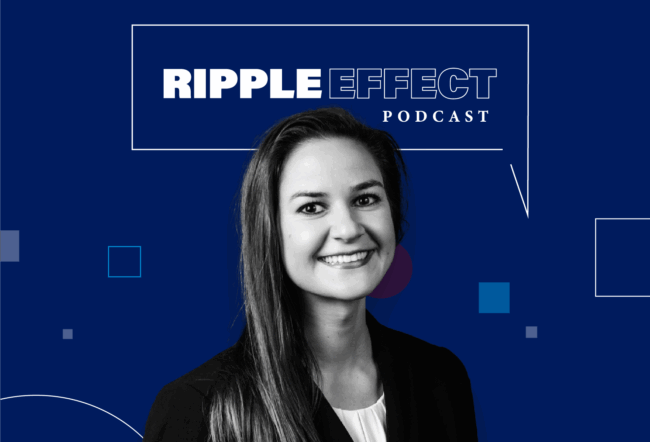A partner today could become a competitor tomorrow. Two years ago Priceline learned this lesson the hard way. For several months in 1999 the Connecticut-based company, which lets customers name their own prices for airline tickets, hotel rooms and other products and services, discussed a marketing alliance with Expedia, an online travel service then owned by Microsoft. (Earlier this month USA Networks acquired Expedia.) Expedia was keenly interested in Priceline’s “name-your-own-price” business model, and Priceline shared detailed technical information about this model with its potential partner during their negotiations. Later Expedia backed away from the deal, however, and launched its own Flight Price Matcher and Hotel Price Matcher services, which were almost exactly like Priceline’s offerings. Stung by what it regarded as theft of its intellectual property, Priceline sued Expedia and Microsoft for patent violation. After more than a year of high-profile acrimony, the lawsuit was settled in January. While Expedia continues to offer its customers the price matcher services, it has agreed to pay Priceline a royalty for their continued use. The fight between Priceline and Microsoft is hardly an isolated case. As more companies enter into strategic alliances to extend their competitive reach, the risk that someone – possibly a potential partner or a vendor – could poach their intellectual property is increasing.
Clemons and Hitt define poaching as “the risk that in any contractual relationship, information that is transferred between parties for purposes specified in the contract will deliberately be used by the receiving party for purposes outside the contract, to its own economic benefit and to the detriment of the party that provided the information.” The researchers add that while the risk of poaching is hardly new, it is becoming “increasingly important in our service-centered, information-driven, post industrial society.”
Two major reasons account for this. First, many organizations now use contractors for IT-related business services such as consulting, technology infrastructure management or providing application services and systems development. This has “vastly increased the opportunities for poaching in recent years,” the researchers point out. Second, as more companies outsource service activities to third-party providers such as call centers, they are forced to share immense amounts of sensitive, private information with these service providers. “In both these cases, these data, processes and procedures may have significant resale value, possibly exceeding the value of the contract,” Clemons and Hitt warn.
More risks follow from the nature of intellectual assets. Unlike physical assets, they can neither be returned nor do they get consumed during use. As such, poaching of intellectual property is often virtually impossible to detect. That is why the risk of intellectual property being poached has not been examined too thoroughly in the past. These days, however, companies that ignore this risk could imperil their future if not their survival.
How, then, can companies protect themselves against poaching? The first step is to identify the forms in which it can occur. Clemons and Hitt explain that poaching could take two forms:
- Shirking: This is the classic form of poaching, and it can be found in cases where a principal employs an agent to perform certain tasks. “In cases where effort is costly to the agent and the outcome of the effort is difficult to measure, the agent will exert less effort than is optimal for the principal, thus increasing his or her own benefit at the expense of the principal,” Clemons and Hitt point out.
- Hold-up: This is sometimes called “opportunistic renegotiation” and involves changing the terms of an agreement due to changes in bargaining power after a contract is signed. For example, once a project has begun a vendor may try to change the deal – knowing that the client is unlikely to change boats in midstream.
Poachers Vs. Poachees
Clemons and Hitt cite four cases – in addition to the well-known one involving Priceline and Expedia – to show how poaching can occur in both service and manufacturing organizations.
First, they point to an instance involving contract manufacturing in the semiconductor industry. According to the researchers, a common practice in the industry is so-called dual sourcing, in which a company licenses its technology to a rival so that it can produce competing products for a royalty. “The goal of these arrangements is to allay customers’ fears of hold-up by the principal manufacturer and ensure a suitable supply of compatible products, which promotes greater adoption,” Clemons and Hitt say.
In 1982 Intel licensed the technology for its 8086 microprocessor to Advanced Micro Devices (AMD) as part of a long-term technology-sharing and dual sourcing arrangement. Four years later Intel decided that it no longer wanted AMD to be the second source, starting with the 80386 microprocessor line. AMD, however, knowing that Intel might discontinue the relationship and building upon its knowledge of Intel’s previous technologies, reverse engineered Intel’s 80386 microchip and developed a competing product. Intel and AMD are now serious rivals in the semiconductor market.
Second, they point to a case dealing with contract servicing in the insurance industry. An insurance company hires a third-party account administrator to process and service its accounts – a process that involves sharing detailed customer data. This gives the account adminstration firm the ability “to mine company data and identify the most profitable customers, which it could pass along as sales leads to competitors or resell to third-party marketing firms,” Clemons and Hitt point out. “At a minimum, this could cause a loss of business. In addition, it could also cause substantial reputational damage to the insurance company if its customers discovered that their private information, entrusted to the insurer, was being made freely available to other firms without their consent.”
Third, Clemons and Hitt cite a case involving a consulting contract in the financial services industry. A credit-card company hires a systems developer to build a complex database to correlate private product-use data with publicly available customer data. The objective is to identify the predictors of profitable customers so that new products can be developed for such clients. The systems consultant builds the database and then – having acquired expertise in developing data warehousing systems for the credit card industry – it proceeds to underbid competitors for work at other credit card companies. It not only re-uses expertise but also the actual code from its previous engagement. “More damaging to the original client, the consulting firm can now pitch this work to competing credit card companies, and with the expertise acquired during its first implementation, it can enable these firms to successfully implement ‘copycat’ technologies years before they otherwise would have been able to do,” Clemons and Hitt note. The rapid deployment of the same technology by rivals dramatically shortens the period of competitive advantage that the original client enjoys.
Finally, Clemons and Hitt cite a case based on a strategic alliance in the travel industry. A large U.S.-based travel agency that is eager to compete with global firms such as American Express wants to enter new markets in Canada and the U.K. Lacking expertise and relationships with vendors in these countries, the large firm forms an alliance with a small travel agency that has a strong presence in these markets. The small agency hopes to benefit from the alliance by gaining access to the larger firm’s global communications network, its client-support software and so on. A few years later, once the bigger firm has developed the expertise – and name recognition – it needs, it opens an office in the same building and in direct competition with its erstwhile partner. In this case, the bigger firm “has appropriated the expertise and exposure it gained through cooperation,” say Clemons and Hitt.
The small travel agency doesn’t just stand around watching demand for its services vanishing, though. It contacts one of the large company’s major competitors and offers to transfer all the expertise it has gained during its former affiliation, thus undercutting some of the large travel agency’s competitive advantage. In other words, it responds to poaching by counter-poaching.
“In each of these cases, we observe the esssential ingredients for poaching,” say Clemons and Hitt. These include “information transfer, opportunity for reuse of transferred information and damage to the original contributor of information.” The reasearchers add that these cases also illustrate the factors that made poaching both possible and likely. First, the problems in these cases are exacerbated by weak intellectual property protection – and the difficulty of “returning” information once someone else has acquired it. “Had suitable intellectual property protection been in place, there would have been legal remedies to reduce the potential for poaching.” Even where legal remedies exist, however, actual poaching is often difficult to observe and detect.
In addition, in all these cases, the poachers had well defined markets. “There were competitors with similar capabilities who could attain parity or advantage by using the poached information,” Clemons and Hitt say. “Poaching is less of a threat absent these complementary assets.”
Controlling Poaching
Clemons and Hitt point out that controlling poaching of intellectual assets can be extremely difficult. The classic remedy to such conflicts of interest is to draw up contracts that align the interests of the vendor and the client or of potential strategic partners. In the case of poaching, however, this doesn’t help much because poaching is difficult to detect. One possibility might be to pay vendors based on profitability or other performance measures, but “this is likely to be a very weak incentive when compared to the much larger gains or damage created by poaching,” Clemons and Hitt argue.
Companies could take certain steps to help reduce the risk of poaching. For example, they could protect themselves against shirking by requiring that their vendors execute performance-based bonds. This would make some resources available to compensate the client in case the contract is not fulfilled, and it would also introduce a third-party arbitrator to oversee whether the terms have been met. This may help in cases where the arbitrator can observe and verify that poaching has occurred.
Corporate reputation offers another possible safeguard against poaching. “Reputation is a form of bonding. A firm builds up a repuation over time for engaging in appropriate conduct. Should a firm engage in opportunism that were detected, it would be revealed in the marketplace and its reputation would suffer,” say Clemons and Hitt.
Neither of these methods is foolproof, though. The effectiveness of bonding as a means to reduce the risk of poaching depends on the victim’s ability to detect it. This is extraordinarily difficult to do in the case of intellectual property. Similarly, the difficulty in using reputation to reduce poaching is that it needs to be credibly demonstrated before the poacher’s reputation can be affected. This, too, is rarely easy to do.
Given these formidable challenges, Clemons and Hitt suggest that companies might consider exploring new approaches – involving creative use of technology – to counter the risk of poaching. For instance, sensitive information could be embedded in software or systems rather than being shared with vendors or potential strategic partners. In addition, “confidential data could be encrypted or kept separate from the information that is necessary to reveal to a vendor to perform a service or build a product,” they recommend. Developing modular products or processes could help prevent reverse engineering. Finally, when large bodies of information (that have potential resale value) are shared with a vendor, they could be seeded with dummy data that might help expose a poacher.
Clemons and Hitt conclude that poaching offers new and formidable challenges as the global economy becomes more knowledge-intensive. According to Clemons, it is “a newly significant form of opportunism” and it represents “the growth opportunity in e-commerce white collar crime.” Poaching requires different analytical models and remedies – many of which still need to be developed. Only partly in jest, he quips: “Maybe companies should actually encourage poaching of their own intellectual property – but figure out a way to get paid for it.”
That is not as incredible as it sounds. After all their legal wrangling, isn’t that exactly what Priceline and Expedia did?



